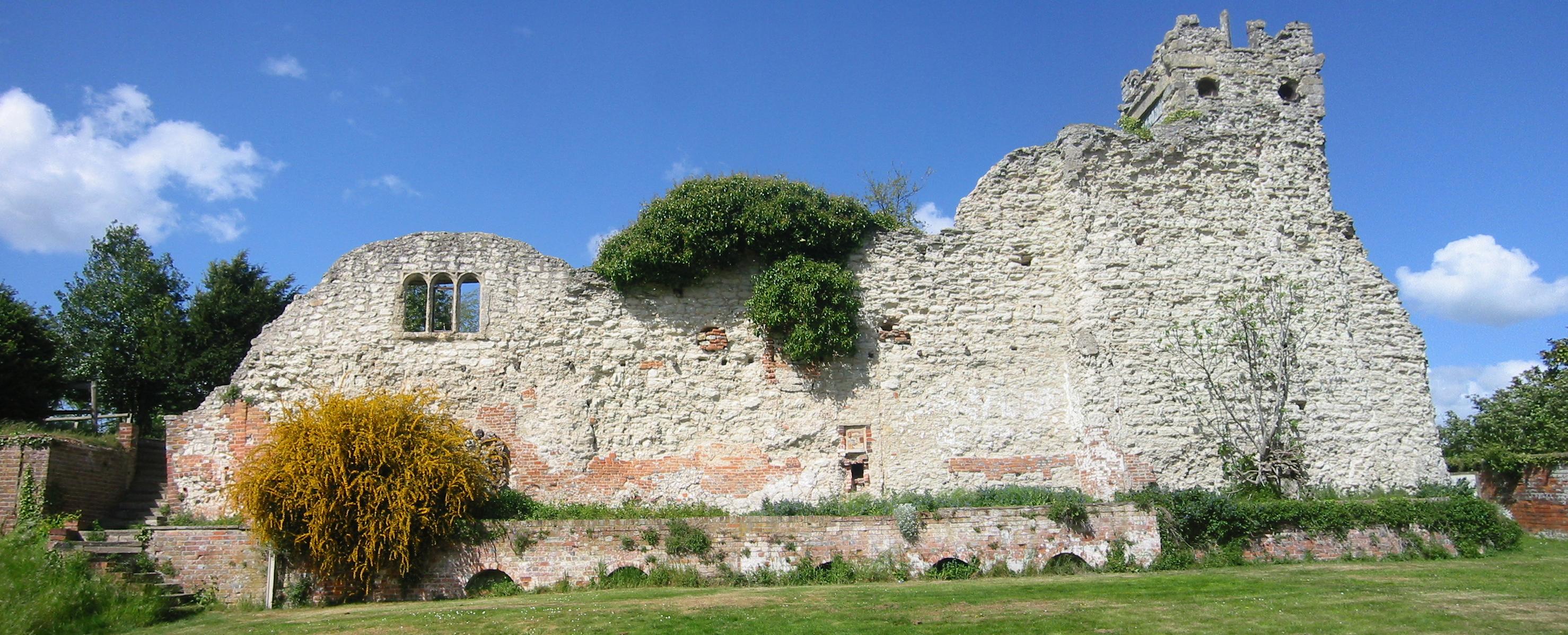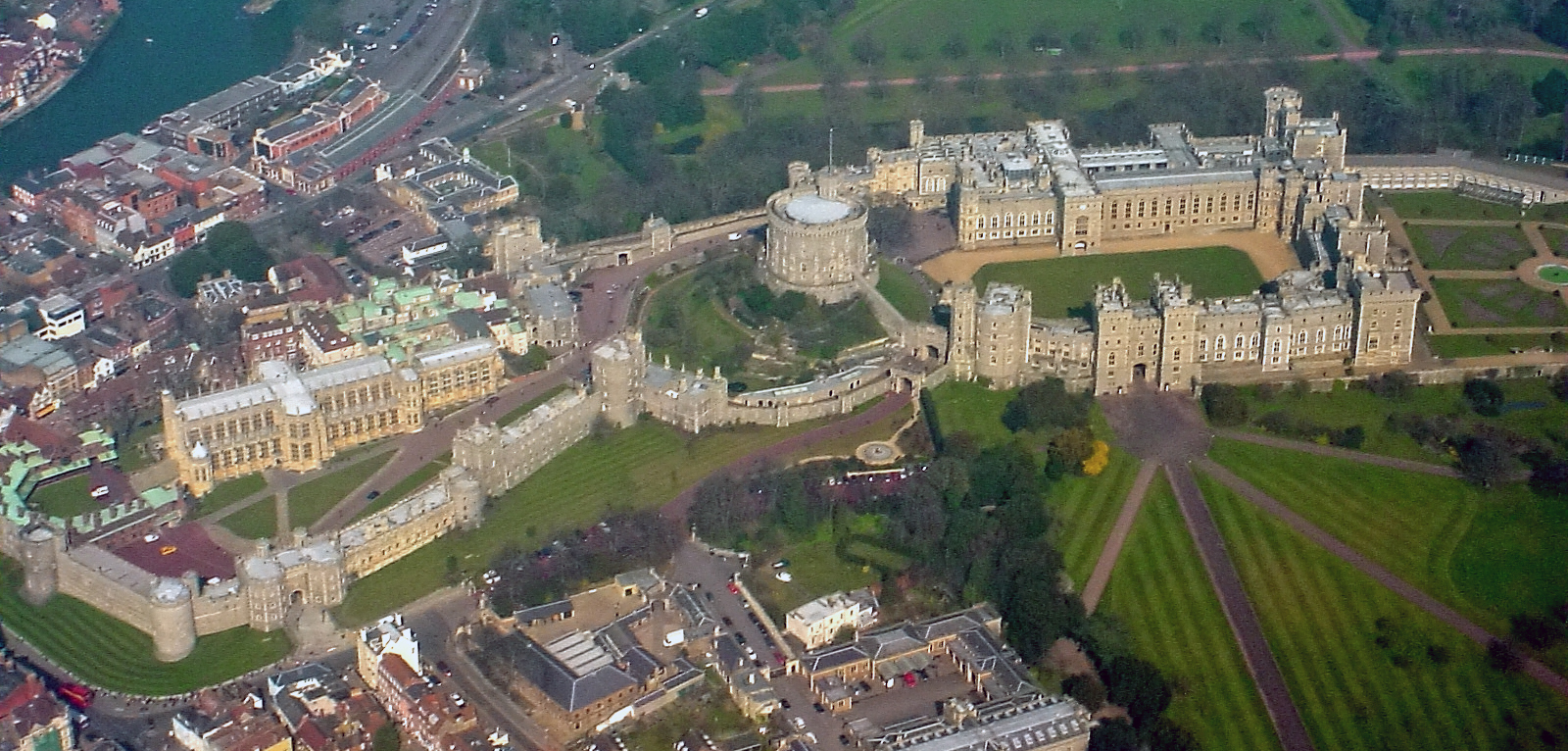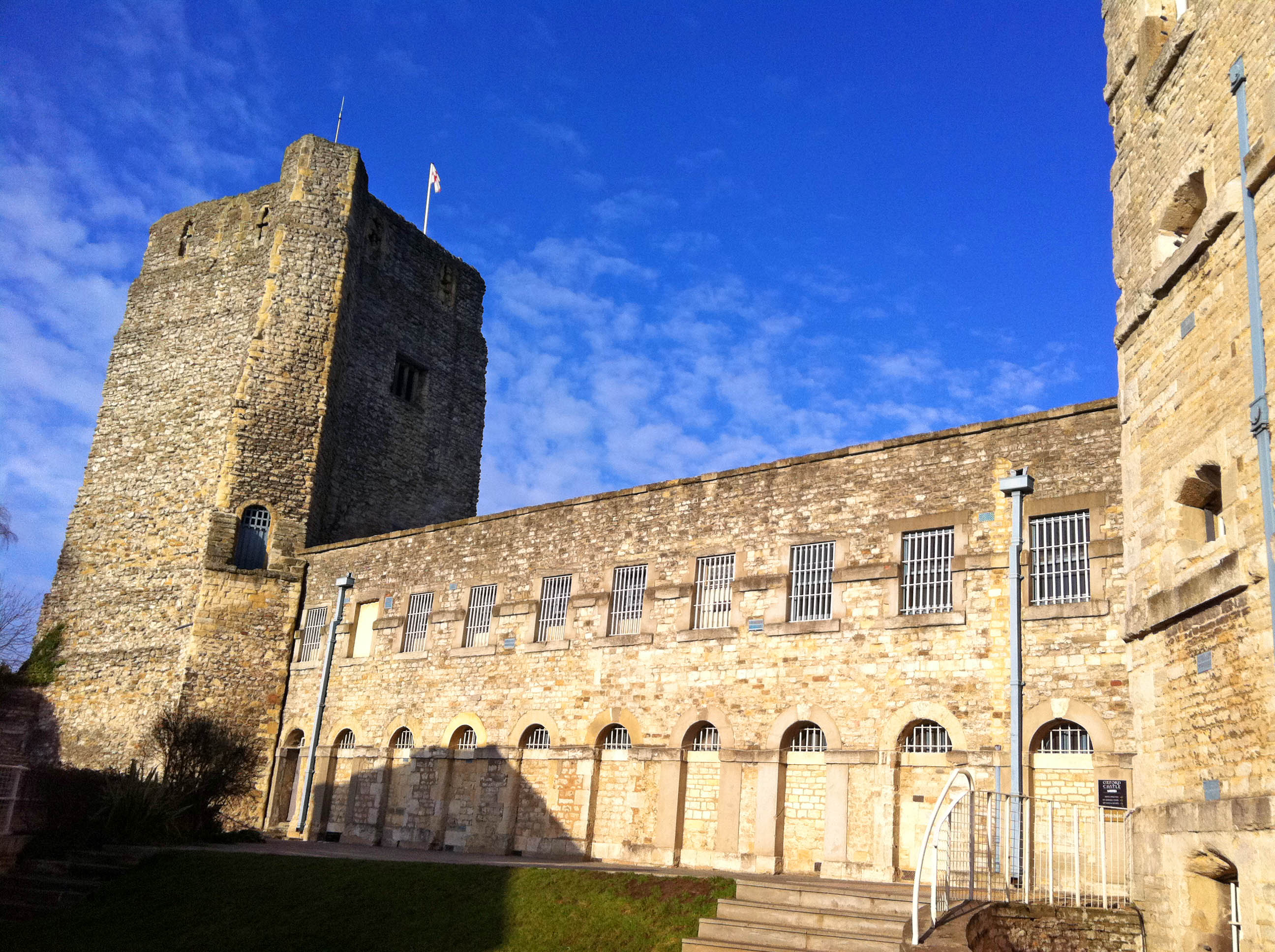|
Wallingford Castle
Wallingford Castle was a major medieval castle situated in Wallingford in the English county of Oxfordshire (historically Berkshire), adjacent to the River Thames. Established in the 11th century as a motte-and-bailey design within an Anglo-Saxon ''burgh'', it grew to become what historian Nicholas Brooks has described as "one of the most powerful royal castles of the 12th and 13th centuries". Held for the Empress Matilda during the civil war years of the Anarchy, it survived multiple sieges and was never taken. Over the next two centuries it became a luxurious castle, used by royalty and their immediate family. After being abandoned as a royal residence by Henry VIII, the castle fell into decline. Refortified during the English Civil War, it was eventually slighted, i.e. deliberately destroyed, after being captured by Parliamentary forces after a long siege. The site was subsequently left relatively undeveloped, and the limited remains of the castle walls and the considerable ... [...More Info...] [...Related Items...] OR: [Wikipedia] [Google] [Baidu] |
Oxfordshire
Oxfordshire is a ceremonial and non-metropolitan county in the north west of South East England. It is a mainly rural county, with its largest settlement being the city of Oxford. The county is a centre of research and development, primarily due to the work of the University of Oxford and several notable science parks. These include the Harwell Science and Innovation Campus and Milton Park, both situated around the towns of Didcot and Abingdon-on-Thames. It is a landlocked county, bordered by six counties: Berkshire to the south, Buckinghamshire to the east, Wiltshire to the south west, Gloucestershire to the west, Warwickshire to the north west, and Northamptonshire to the north east. Oxfordshire is locally governed by Oxfordshire County Council, together with local councils of its five non-metropolitan districts: City of Oxford, Cherwell, South Oxfordshire, Vale of White Horse, and West Oxfordshire. Present-day Oxfordshire spanning the area south of the Thames was h ... [...More Info...] [...Related Items...] OR: [Wikipedia] [Google] [Baidu] |
Slighting
Slighting is the deliberate damage of high-status buildings to reduce their value as military, administrative or social structures. This destruction of property sometimes extended to the contents of buildings and the surrounding landscape. It is a phenomenon with complex motivations and was often used as a tool of control. Slighting spanned cultures and periods, with especially well-known examples from the English Civil War in the 17th century. Meaning and use Slighting is the act of deliberately damaging a high-status building, especially a castle or fortification, which could include its contents and the surrounding area. The first recorded use of the word 'slighting' to mean a form of destruction was in 1613. Castles are complex structures combining military, social, and administrative uses, and the decision to slight them took these various roles into account. The purpose of slighting was to reduce the value of the building, whether military, social, or administrative. Des ... [...More Info...] [...Related Items...] OR: [Wikipedia] [Google] [Baidu] |
Curtain Wall (fortification)
A curtain wall is a defensive wall between two fortified towers or bastions of a castle, fortress, or town. Ancient fortifications Evidence for curtain walls or a series of walls surrounding a town or fortress can be found in the historical sources from Assyria and Egypt. Some notable examples are ancient Tel Lachish in Israel and Buhen in Egypt. Curtain walls were built across Europe during the Roman Empire; the early 5th century Theodosian Walls of Constantinople influenced the builders of medieval castles many centuries later. Curtain wall castles In medieval castles, the area surrounded by a curtain wall, with or without towers, is known as the bailey. The outermost walls with their integrated bastions and wall towers together make up the enceinte or main defensive line enclosing the site. In medieval designs of castle and town, the curtain walls were often built to a considerable height and were fronted by a ditch or moat to make assault difficult. Walls were toppe ... [...More Info...] [...Related Items...] OR: [Wikipedia] [Google] [Baidu] |
Shell Keep
A shell keep is a style of medieval fortification, best described as a stone structure circling the top of a motte. In English castle morphology, shell keeps are perceived as the successors to motte-and-bailey castles, with the wooden fence around the top of the motte replaced by a stone wall. Castle engineers during the Norman period did not trust the motte to support the enormous weight of a stone keep. A common solution was to replace the palisade with a stone wall then build wooden buildings backing onto the inside of the wall. This construction was lighter than a keep and prevented the walls from being undermined, meaning they could be thinner and lighter. A gazetteer compiled by archaeologist Robert Higham counted 21 shell keeps in England and Wales. Examples include the Round Tower at Windsor Castle and the majority were built in the 11th and 12th centuries. Surviving English examples of shell keeps include: * Arundel, West Sussex (re-modelled post-medieval) * Berkhamps ... [...More Info...] [...Related Items...] OR: [Wikipedia] [Google] [Baidu] |
Henry I Of England
Henry I (c. 1068 – 1 December 1135), also known as Henry Beauclerc, was King of England from 1100 to his death in 1135. He was the fourth son of William the Conqueror and was educated in Latin and the liberal arts. On William's death in 1087, Henry's elder brothers Robert Curthose and William Rufus inherited Normandy and England, respectively, but Henry was left landless. He purchased the County of Cotentin in western Normandy from Robert, but his brothers deposed him in 1091. He gradually rebuilt his power base in the Cotentin and allied himself with William Rufus against Robert. Present at the place where his brother William died in a hunting accident in 1100, Henry seized the English throne, promising at his coronation to correct many of William's less popular policies. He married Matilda of Scotland and they had two surviving children, Empress Matilda and William Adelin; he also had many illegitimate children by his many mistresses. Robert, who invaded from Normandy ... [...More Info...] [...Related Items...] OR: [Wikipedia] [Google] [Baidu] |
Brien FitzCount
Brian fitz Count (also Brian of Wallingford) was descended from the Breton ducal house, and became an Anglo-Norman noble, holding the lordships of Wallingford and Abergavenny. He was a loyal adherent of Henry I, King of England, and a staunch supporter of his daughter, the Empress Matilda, during the Anarchy (1135–1153). Brian would go on to become one of the most notable knights to have sided with Empress Matilda and the Angevin faction. As a result, he is consistently mentioned in contemporary sources. Life Brian fitz Count was an illegitimate son of Alan IV, Duke of Brittany, and thus the half-brother of Conan III, Duke of Brittany.C. Warren Hollister, ''Henry I'' (Yale University Press, New Haven & London, 2003), p. 314 He was sent to be raised at the court of King Henry I of England.Henry's patronage of Brian fitz Count, the illegitimate son of his brother-in-law Alan Fergent, could be seen as patronage to a nephew and his presence at court could be the result of having ... [...More Info...] [...Related Items...] OR: [Wikipedia] [Google] [Baidu] |
Miles Crispin
Miles Crispin (died 1107), also known as Miles or Milo of Wallingford, was a wealthy Norman landowner, particularly associated with Wallingford Castle in Berkshire (now Oxfordshire). The Domesday Book records Miles as a major landowner with holdings in Berkshire, Buckinghamshire, Oxfordshire, Surrey, Wiltshire and two other neighbouring counties as well as being Tenant-in-chief in a lengthy list of places. Miles is believed to be a member of the Crispin family of Neaufles in Normandy: suggestions include son of William Crispin, baron of Neaufles ( Neaufles-Saint-Martin or Neaufles-Auvergny), part of William the Conqueror's invading force, and a relation of Gilbert Crispin, abbot of Westminster, but this is uncertain. Miles married Matilda, daughter of Robert D'Oyly, in 1084. While D'Oyly is generally credited with building Wallingford Castle, it has also been suggested that Miles Crispin was its first castellan of Wallingford, and owner of the lands of Wigod. Matilda later marrie ... [...More Info...] [...Related Items...] OR: [Wikipedia] [Google] [Baidu] |
Wallingford Castle Plan
Wallingford may refer to: Places * Wallingford, Oxfordshire, England, United Kingdom **Wallingford Castle the castle * Wallingford, Connecticut, United States * Wallingford, Iowa, United States * Wallingford, Kentucky, United States * Wallingford, Pennsylvania, United States * Wallingford, Seattle, United States * Wallingford, Vermont, United States, a town ** Wallingford (CDP), Vermont, a census-designated place in the town * Wallingford station (other), stations of the name Administrative units * Municipal Borough of Wallingford * Wallingford Rural District * Wallingford (UK Parliament constituency), a former constituency, abolished in 1885 People * Brian of Wallingford, also known as Brien FitzCount * Ealdgyth of Wallingford, wife of Robert D'Oyly * Jesse Wallingford (1872–1944), British sport shooter * John of Wallingford (d. 1214), English monk and abbot of St. Albans abbey * John of Wallingford (d. 1258), English monk and chronicler * Miles of Wallingford, also ... [...More Info...] [...Related Items...] OR: [Wikipedia] [Google] [Baidu] |
Housecarl
A housecarl ( on, húskarl; oe, huscarl) was a non-servile manservant or household bodyguard in medieval Northern Europe. The institution originated amongst the Norsemen of Scandinavia, and was brought to Anglo-Saxon England by the Danish conquest in the 11th century. They were well-trained, and paid as full-time soldiers. In England, the royal housecarls had a number of roles, both military and administrative, and they fought under Harold Godwinson at the Battle of Hastings. Etymology Housecarl is a calque of the original Old Norse term, ''húskarl'', which literally means "house man". ''Karl'' is cognate to the Old English ''churl'', or ''ceorl'', meaning a man, or a non-servile peasant. The ''Anglo-Saxon Chronicle'' uses ''hiredmenn'' as a term for all paid warriors and thus is applied to ''housecarl'', but it also refers to ''butsecarls'' and ''lithsmen''. It is not clear whether these were types of ''housecarl'' or different altogether. In Scandinavia As free manserva ... [...More Info...] [...Related Items...] OR: [Wikipedia] [Google] [Baidu] |
Ford (crossing)
A ford is a shallow place with good footing where a river or stream may be crossed by wading, or inside a vehicle getting its wheels wet. A ford may occur naturally or be constructed. Fords may be impassable during high water. A low-water crossing is a low bridge that allows crossing over a river or stream when water is low but may be treated as a ford when the river is high and water covers the crossing. Description A ford is a much cheaper form of river crossing than a bridge, and it can transport much more weight than a bridge, but it may become impassable after heavy rain or during flood conditions. A ford is therefore normally only suitable for very minor roads (and for paths intended for walkers and horse riders etc.). Most modern fords are usually shallow enough to be crossed by cars and other wheeled or tracked vehicles (a process known as "fording"). Fords may be accompanied by stepping stones for pedestrians. The United Kingdom has more than 2,000 fords, and most ... [...More Info...] [...Related Items...] OR: [Wikipedia] [Google] [Baidu] |
Robert D'Oyly (Oxford)
Robert D'Oyly (also spelt Robert D'Oyley de Liseaux, Robert Doyley, Robert de Oiley, Robèrt d'Oilly, Robert D'Oyley and Roberti De Oilgi) was a Norman nobleman who accompanied William the Conqueror on the Norman conquest, his invasion of England. He died in 1091. Background Robert was the son of Walter D'Oyly and elder brother to Nigel D'Oyly. D'Oyly is a Norman French name, from the place name Ouilly near Lisieux in pays d'Auge, present Calvados ''département'' in Normandy. He married Ealdgyth, the daughter of Wigod, the Saxon lord of Wallingford. After Wigod's death, William appointed Robert the lord of Wallingford, and ordered him to fortify Wallingford Castle between 1067 and 1071. It is believed he may have become the third High Sheriff of Berkshire around this time. He was made Baron Hocknorton. D'Oyly was a sworn brother-in-arms of Roger d'Ivry. The Domesday Book records that by 1086 D'Oyly and d'Ivry held a number of manors either partitioned between the two of them ... [...More Info...] [...Related Items...] OR: [Wikipedia] [Google] [Baidu] |
Oxford Castle
Oxford Castle is a large, partly ruined medieval castle on the western side of central Oxford in Oxfordshire, England. Most of the original moated, wooden motte and bailey castle was replaced in stone in the late 12th or early 13th century and the castle played an important role in the conflict of the Anarchy. In the 14th century the military value of the castle diminished and the site became used primarily for county administration and as a prison. The surviving rectangular St George's Tower is now believed to pre-date the remainder of the castle and be a watch tower associated with the original Saxon west gate of the city. Most of the castle was destroyed in the English Civil War and by the 18th century the remaining buildings had become Oxford's local prison. A new prison complex was built on the site from 1785 onwards and expanded in 1876; this became HM Prison Oxford. The prison closed in 1996 and was redeveloped as a hotel and visitor attraction. The medieval remains of t ... [...More Info...] [...Related Items...] OR: [Wikipedia] [Google] [Baidu] |







